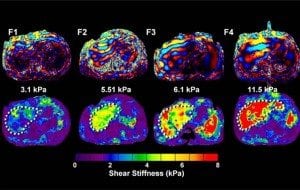

Given the advances of the last two decades, HIV is no longer a death sentence for most patients. However, for drug users and hepatitis C- (HCV) infected patients—especially cocaine users—HIV is still life threatening. This problem is being tackled by a team of experts lead by FIU Robert Stempel College of Public Health & Social Work professor Marianna K. Baum.
In 2013, Baum, a dietetics and nutrition professor, found that HIV-infected patients who took inexpensive multivitamins with mineral supplements experienced slower disease progression. Now, she is turning her attention to people with HIV again with a new $5.4 million multiyear National Institutes of Health grant. The study will explore the role of cocaine use in the progression of liver disease in people with HIV.
“Liver disease is known to shorten the lives of people with HIV,” said Baum, who has more than 20 years of experience with research funded by NIH and the National Institute on Drug Abuse (NIDA). “With 35 million people around the world with HIV—and a large number of them regular drug users—this research is focused on determining how to help them more effectively.”
Many of the HIV-infected persons in the United States also have HCV. Cocaine, the most abused drug in South Florida, puts patients at risk for treatment failure, lower adherence to medications, and may have an independent effect on liver disease.
HCV-infected people who also have HIV will be studied using noninvasive technology. The team will use magnetic resonance elastography (MRE), a highly accurate method for diagnosing liver disease.
Baum has enlisted the help of experts such as: Richard L. Ehman, professor and chairman of the Mayo Clinic, Department of Radiology; Jeffrey Horstmyer, professor and founding chairman of the Herbert Wertheim College of Medicine, Department of Neurology; and Kenneth E. Sherman, professor of medicine and director, University of Cincinnati, Division of Digestive Diseases.
The study will leverage the existing Miami Adult Studies on HIV cohort (MASH). The people that make up MASH have been studied by Baum’s research team over the past 12 years, and this new program will expand the size of this study group from 881 participants to 1,500. Unlike many other HIV study groups made up of mostly middle- to high-income homosexual white men, MASH is predominantly comprised of heterosexual Hispanics, African-Americans, women and drug users that do not use needles.
“The value of this study is that it will service our community because the MASH cohort will include lower-income minorities,” Baum said.
Baum explained that some lower-income individuals may not have a dependable means of transportation to go to the doctor, and for others, cultural stigma may have kept them from going to a doctor for treatment. For these reasons, part of the work will focus on helping participants make and keep their medical appointments, in an effort to overcome health access disparities.
“We are grateful to Nora Volkov, director of NIDA, and Jacques Normand, director of AIDS Research, NIDA, for their support, and to J. Khalsa, chief, Medical Consequences Branch at NIDA, for guiding our research efforts that culminated in receiving the resources to follow this unique cohort for the next five years,” said Baum.
The study will create several new jobs at FIU, including a nurse, data manager, study recruiter and study coordinator as well as two postdoctoral researchers. In addition to Baum, the interdisciplinary research team includes:
Robert Stempel College of Public Health & Social Work
- Adriana Campa, associate professor in the Department of Dietetics & Nutrition
- Sabrina Sales Martinez, research program coordinator in the Department of Dietetics & Nutrition
- O. Dale Williams, professor and chair of the Department of Biostatistics and director of the Integrated Biostatistics and Data Management Center
- Mario De La Rosa, professor of social work and director of the Center for Research on U.S. Latino HIV/AIDS and Drug Abuse (CRUSADA)
Herbert Wertheim College of Medicine
- Pedro J. Greer, Jr., associate dean for Community Engagement, and professor and chair of the Department of Medicine, Family Medicine and Community Health
- Jeffrey Horstmyer, founding chairman of the Department of Neurology
- Jorge Murillo, associate professor in the Department of Medicine
Other Institutions
- Richard L. Ehman, Chair and professor of radiology at the Mayo Clinic in Rochester, Minnesota
- Kenneth Sherman, Gould Professor of Medicine and director, Division of Digestive Diseases at the University of Cincinnati College of Medicine in Cincinnati, Ohio
*Image Copyright © 2012 Wiley Periodicals, Inc: Venkatesh, S. K., Yin, M. and Ehman, R. L. (2013), Magnetic resonance elastography of liver: Technique, analysis, and clinical applications. J. Magn. Reson. Imaging, 37: 544–555. doi: 10.1002/jmri.23731.





